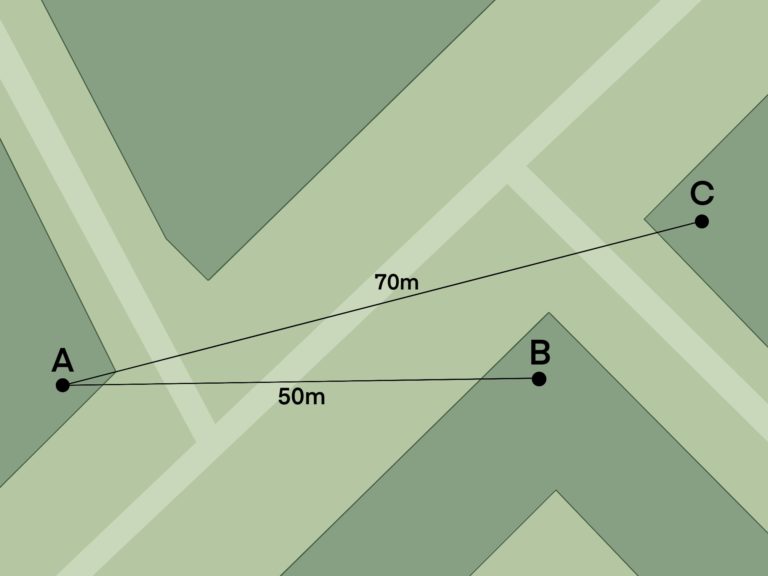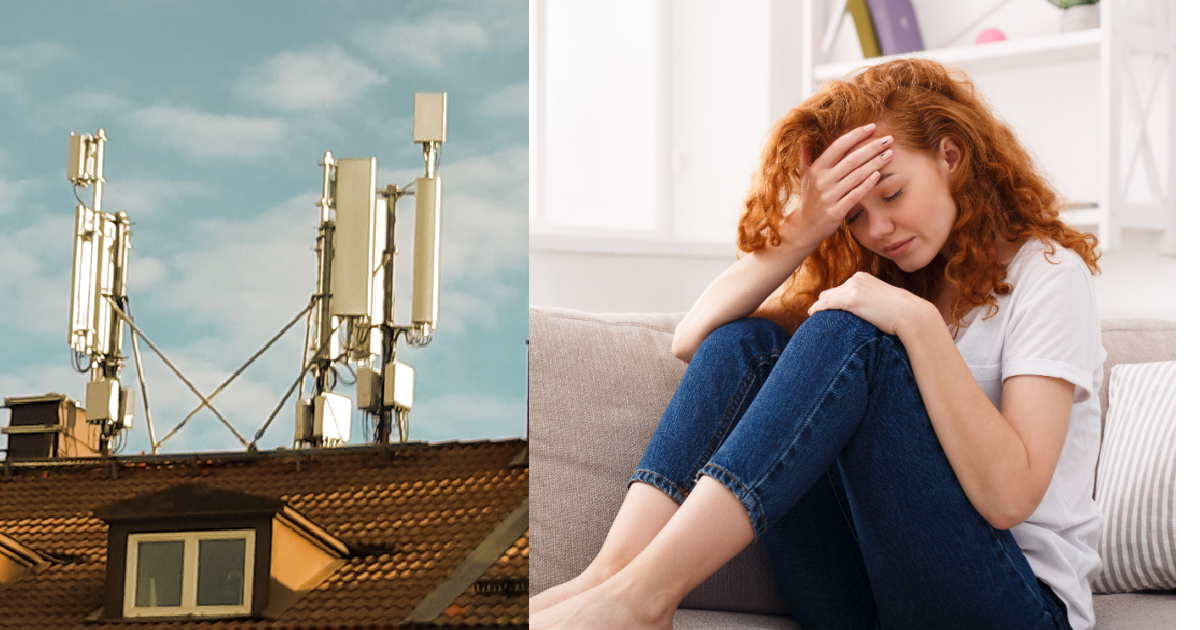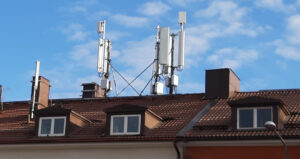A fourth case study investigating the health effects of radiation from new 5G base stations shows that three people in a family have an increased incidence of a range of symptoms linked to exposure to microwave radiation. The study also shows that radiation in the home was significantly elevated due to the proximity of two 5G base stations whose antennas were directed towards the home.
The new case study, published in the Journal of Cancer Science and Clinical Therapeutics, was carried out by Mona Nilsson from the Swedish Radiation Protection Foundation and Dr Lennart Hardell, former professor of oncology at Örebro University Hospital and epidemiologist with 40 years of research experience, now working at the Swedish Research Foundation for Environment and Cancer. They have also published the previous three case studies on the health impact of radiation from 5G base stations. These four case studies appear to be the only ones done so far on the health impact of 5G.
Measurements showed elevated radiation
The new study examines 5G exposure and self-assessed prevalence of symptoms among 3 people in the same family. They live in a home in the antenna direction of two 5G base stations located 50 and 70 metres away. The sketch below shows the location of the home (A) in relation to the two 5G base stations (B, C).
 The radiation levels measured in the home were very high compared to the levels previously shown to cause ill health due to radiation from previous generations of mobile phones (2G, 3G).
The radiation levels measured in the home were very high compared to the levels previously shown to cause ill health due to radiation from previous generations of mobile phones (2G, 3G).
The highest levels were measured in the room closest to the base stations, up to 1 200 000 μW/m2 in maximum value.
In the bedrooms of the study subjects, the levels of radiation were greatly elevated at the head of the beds and varied depending on the distance to the base stations from 34,000 μW/m2 at the farthest bed to 320,000 μW/m2 at the closest bed.
The 3G and 4G base stations had been in the same positions for at least 10 years, but were replaced by 5G in mid-July 2021 and during May 2022. There are no measurements of the levels in the home at the time before the 5G base stations were commissioned, but from experience, 5G deployment leads to significantly higher radiation than 3G and 4G. The previous three case studies showed that the people studied quickly developed typical symptoms associated with exposure to elevated microwave radiation that they had not experienced before. The fact that 5G would increase radiation enormously could be understood from a report from Ericsson before the deployment of 5G.
Symptoms in the family
As in previous case studies, the three people included in the new study were asked to fill in a form indicating the symptoms they were experiencing at the time of measurement and to estimate the severity of the symptoms.
The most common symptoms were sleep problems, fatigue, concentration problems, short-term memory impairment and visual impairment. The severity and type of symptoms experienced by different family members varied.
For 50 years, research has described that women appear to be more sensitive than men and that a ‘surprisingly wide’ range of different neurological and physical symptoms can be expected as a result of microwave exposure. The youngest woman in the family had the most symptoms and rated her symptoms highest, although the values measured in her bedroom were lower than those of the other family members. However, radiation levels were greatly elevated in her bedroom and well above the levels at which researchers have previously observed elevated incidence of these symptoms in studies. The value at the head pillow was 34,000 μW/m2, which is well above the levels, starting at just over 100-500 μW/m2, that previous research has found to increase the incidence of these symptoms. It is also well above the levels that scientists and doctors recommend that people should be exposed to a maximum of 1-10 μW/m2 in the bedroom (EuropaEM EMF Guidelines). People are generally more sensitive to the impact of radiation during sleep.
Measured radiation in the home at the pillow: 34 000 – 320 000 μW/m2.
Previous research health effects (2G) from: 100-500μW/m2
Recommendations maximum radiation in bedrooms: 1-10 μW/m2
ICNIRP limits suppported by WHO and EU Commission: 10,000,000 μW/m2 x 1000
The table above illustrates the absurdly high ICNIRP limit value in relation to observed health effects and the recommendations of independent researchers. The limit that ICNIRP claims would protect against all established health risks is measured as an average value over 6 minutes. In the current study, the maximum peak value has been measured. ICNIRP’s limit, allows maximum values of up to 1000 times the average value of 10 000 000 μW/m2. See this article.
The previous studies
This study adds to previous studies that have also shown that 5G causes ill health among people living near base stations. In these studies, the people studied lived or worked either directly below the base stations (2 cases) or at a distance of 60 metres (one case). As in this case, highly elevated levels of radiation were measured, above 2,500,000 μW/m2 (maximum value of the meter used) in two of the studies and a similar maximum level, i.e. about 1,200,000 μW/m2 in one of the studies.
In the previous studies, the subjects judged themselves to be in good health before exposure to 5G, even though all of them had 3G/4G base stations already in the same position as the new one for 5G. However, in all cases, the people studied became so ill in a short time, in one case within a few days, that they chose to move. It became impossible to stay in their homes or offices.
Scientists have been warning since 2017
Since 2017, scientists and doctors have warned of serious consequences for human health due to the increase in microwave radiation caused by 5G. The current 433 signatories of the 5G Appeal note that it has already been fully proven that radiation from previous generations causes harmful health effects and that the increase that 5G will bring can thus be expected to cause serious consequences, not only for human health but also for the environment.
They also noted that it is unacceptable for 5G to be rolled out without research showing that the radiation does not harm human health or the environment, which is why a moratorium has been requested since 2017. This means that the deployment of 5G should not take place before research has been carried out showing that the technology is safe.
Such research has still not been done. The shocking truth is that there is no research showing that radiation from 5G base stations does not harm human health or the environment. The only studies to date on the health effects of whole-body exposure to real 5G are the now-published case studies by Hardell and Nilsson, all published in 2023, three years after telecoms companies began mass exposing people in their own homes, workplaces, schools and public spaces to 5G radiation that had never been safety tested.
Microwave syndrome described 50 years ago
The symptoms reported by the subjects in these studies were described as early as the 1960s and 1970s as an effect of prolonged exposure to microwave radiation at levels below the ICNIRP limits.
According to Karel Marha (page 188), former director at the Czechoslovakian Institute for Occupational Health and Safety, it was observed that people exposed in their profession often developed a group of symptoms that in the 1970s were named the microwave syndrome: difficulty sleeping, daytime fatigue, memory problems, anxiety, and headaches. The effects are mainly due to the impact on the functioning of the central nervous system.
These effects, observed over 50 years ago at levels below the ICNIRP limits, were mainly due to the modulation and pulse characteristics of the signal, which were considered more harmful than a continous one.
Marha also concluded that the effects of radiation on the living organism are largely reversible and that the effects of repeated exposure are cumulative. Over time the organism becomes more aware of the effects of the radiation.
The biological activity is directly dependent on the intensity of the radiation; not only the average power but also the maximum power. A pulsed signal is therefore more biologically active than a continuous signal despite the same average power and the same frequency. The results obtained so far indicate that exposure to several frequencies simultaneously is biologically more effective and therefore more dangerous.”
These factors are also not taken into account by the ICNIRP, since their limits are based solely on the ability of the radiation to heat tissue in a short time (within 60 minutes) and is verified by measuring the average value over a 6-minute period, regardless of whether the signal is modulated, pulsed or if there are many different frequencies at the same time. The authorities’ reference value thus lacks protection against these health effects, which have been described for several decades, but also against harmful, more serious long-term effects in the form of cancer and degenerative diseases.
Microwave syndrome has also been observed over the last 20 years in the vicinity of 2G or 3G base stations in repeated studies. Most have studied symptoms of the microwave syndrome, but increased incidence of cancer and ALS has also been reported. A research review published in 2022 reported that a clear majority of published studies show an increased risk of ill health for residents in the vicinity of mobile phone masts and mobile phone base stations.
ICNIRP limits are extreme
The ICNIRP limits are seriously flawed and lack protection against the many harmful health effects shown in repeated research at levels below them. In all four of the currently available case studies on 5G, the people studied have suffered from symptoms of the microwave syndrome even though the measured elevated levels are far below the current reference values.
The reference value has therefore been criticised as inaccurate and indirectly dangerous as it gives telecom companies the green light to forcibly expose people in their own homes to levels of microwave radiation that are known to be harmful.
ICNIRP’s values are not protective, but pose a serious risk to human health and the environment because they allow the population, including the most sensitive, to be exposed to harmful radiation along with the unscientific claim that they are protective, the THE EMF CALL noted.
In an article published in 2022, 16 world-leading scientists point out the many errors built into ICNIRP limits. 259 scientists have also signed an EMF Scientist Appeal, which states that the reference value is not protective against a range of harmful effects shown in a growing body of research and that the reference value must therefore be lowered.
References:
Nilsson, Hardell. 5G Radiofrequency Radiation Caused the Microwave Syndrome in a Family Living Close to the Base Stations. Journal of Cancer Science and Clinical Therapeutics. 7 (2023): 127-134 Open access
Hardell, Nilsson. Case Report: The Microwave Syndrome after Installation of 5G Emphasizes the Need for Protection from Radiofrequency Radiation. Ann Case Report. 8: 1112. DOI: 10.29011/2574-7754.101112. Open Access
Nilsson, Hardell. Development of the Microwave Syndrome in Two Men Shortly after Installation of 5G on the Roof above their
Office. Ann Clin Case Rep. 2023; 8: 2378. Open Access







